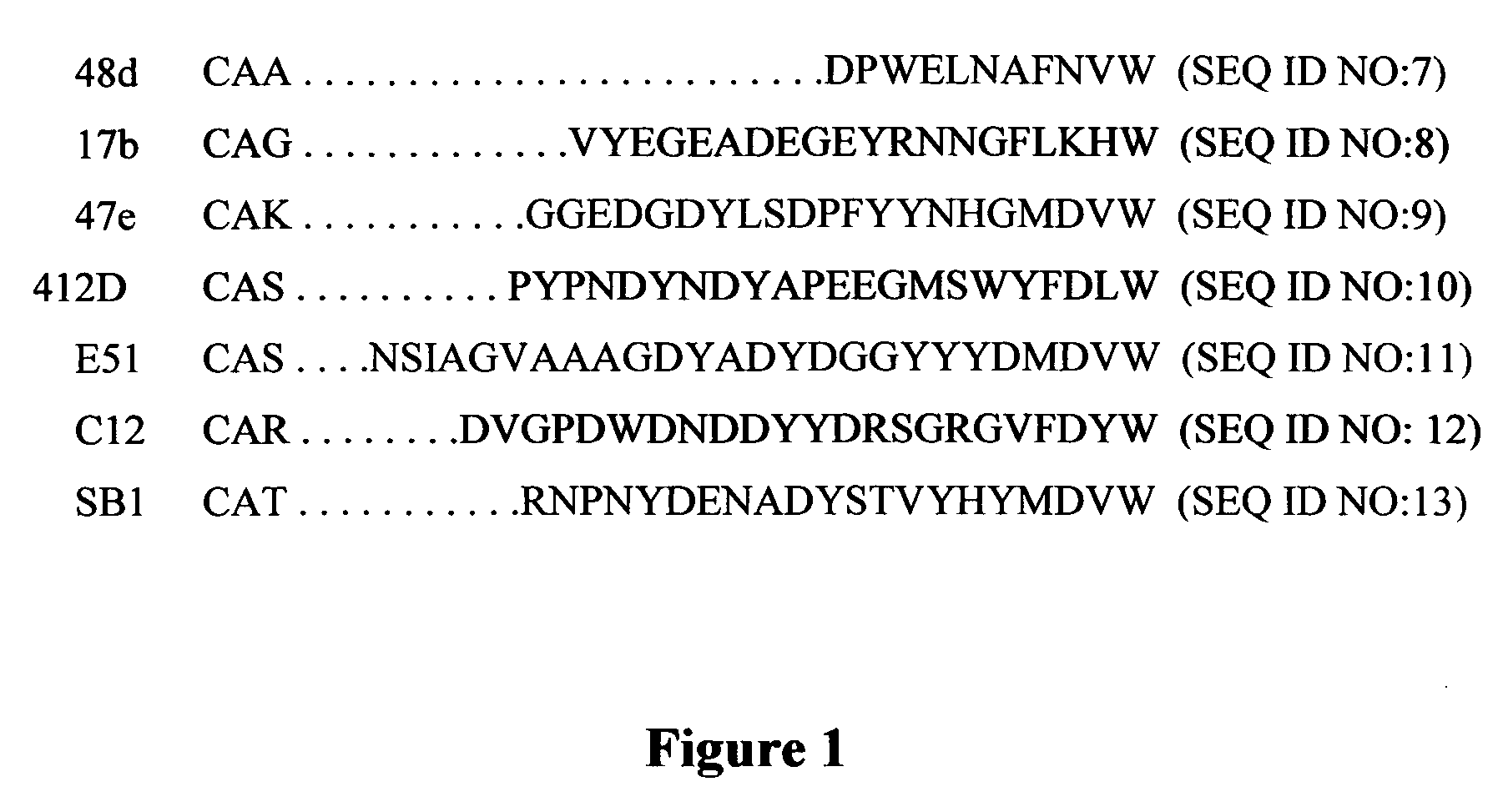Polypeptides derived from anti-HIV-1 gp120 antibodies that abrogate gp120 binding to CCR5
a technology of gp120 and ccr5, which is applied in the field of polypeptides, can solve the problems of substantially less capable of neutralizing an x4-isolate, less efficient at neutralizing the primary r5-virus ada, etc., and achieves the effect of increasing the affinity of antibodies for antigens
- Summary
- Abstract
- Description
- Claims
- Application Information
AI Technical Summary
Benefits of technology
Problems solved by technology
Method used
Image
Examples
examples
A. INTRODUCTION
[0032]The complementarity determining region 3 (CDR3) of the antibody heavy chain is the most diverse, and usually the most functionally important, antigen binding domain. Unlike the CDR1 and CDR2 domains, which derive directly from the variable region genes, the heavy chain CDR3 derives primarily from one of 23 functional diversity (D) region genes together with one of six joining (J) region genes. The junctions bounding the D-region are also modified by N- and P-linked addition. Most D-region genes encode sequences disproportionately rich in tyrosines. Some of these sequences—for example diversity genes 3-9, 3-22, 4-11, 4-17, and 5-12—are very similar to regions of proteins known to be tyrosine sulfated, and nine of 23 D genes encode sequences of one or more tyrosines immediately adjacent to an aspartic acid, a motif present at most sites of tyrosine sulfation. This apparent bias in D-gene-encoding sequences, combined with the well-documented ability of tyrosine sul...
PUM
| Property | Measurement | Unit |
|---|---|---|
| concentration | aaaaa | aaaaa |
| concentration | aaaaa | aaaaa |
| length | aaaaa | aaaaa |
Abstract
Description
Claims
Application Information
 Login to View More
Login to View More - R&D
- Intellectual Property
- Life Sciences
- Materials
- Tech Scout
- Unparalleled Data Quality
- Higher Quality Content
- 60% Fewer Hallucinations
Browse by: Latest US Patents, China's latest patents, Technical Efficacy Thesaurus, Application Domain, Technology Topic, Popular Technical Reports.
© 2025 PatSnap. All rights reserved.Legal|Privacy policy|Modern Slavery Act Transparency Statement|Sitemap|About US| Contact US: help@patsnap.com

